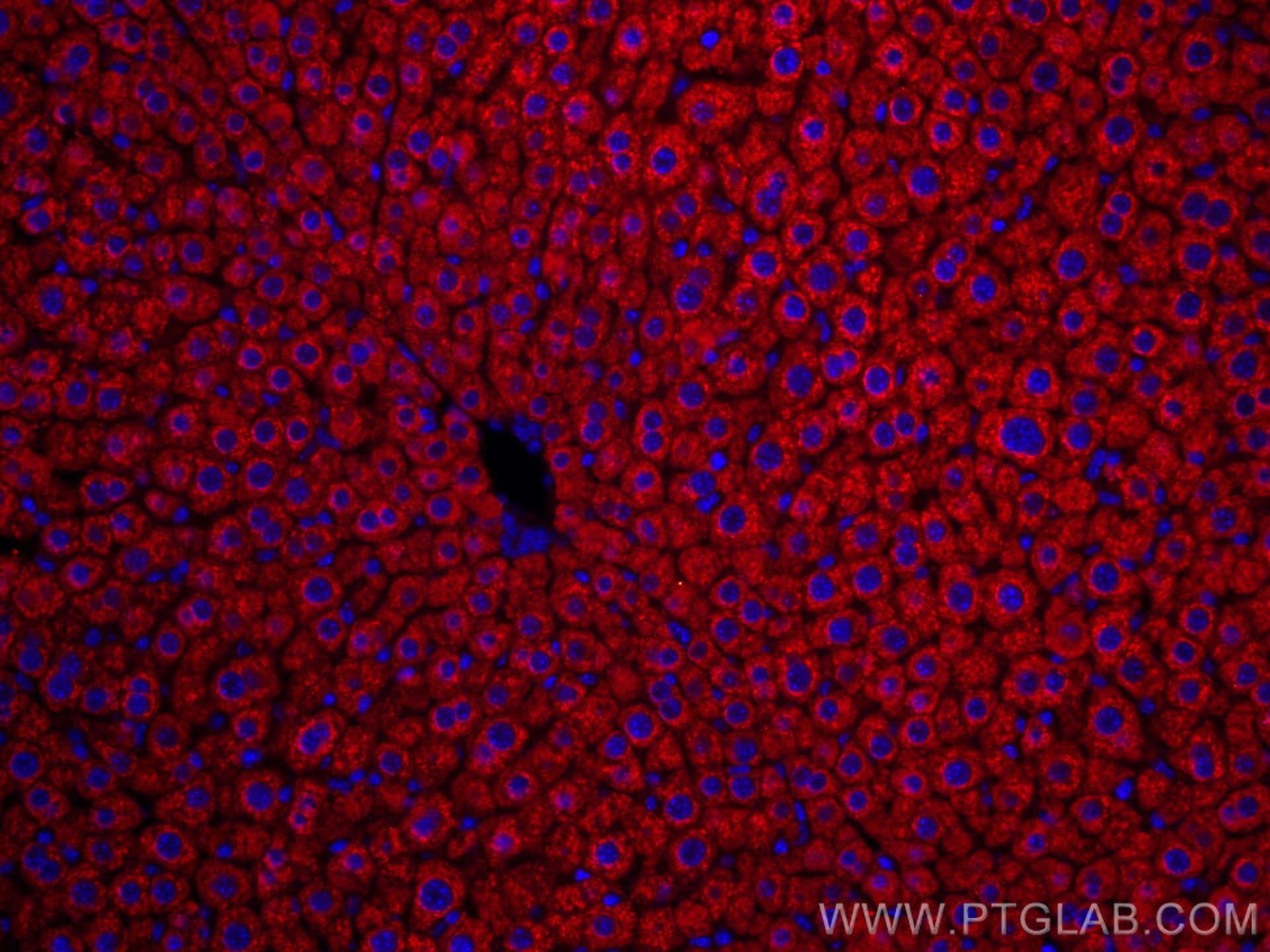验证数据展示
经过测试的应用
| Positive IF-P detected in | mouse liver tissue |
推荐稀释比
| 应用 | 推荐稀释比 |
|---|---|
| Immunofluorescence (IF)-P | IF-P : 1:50-1:500 |
| It is recommended that this reagent should be titrated in each testing system to obtain optimal results. | |
| Sample-dependent, Check data in validation data gallery. | |
产品信息
CL594-66272 targets MCP-1/CCL2 in IF-P applications and shows reactivity with mouse samples.
| 经测试应用 | IF-P Application Description |
| 经测试反应性 | mouse |
| 免疫原 | MCP-1/CCL2 fusion protein Ag24085 种属同源性预测 |
| 宿主/亚型 | Mouse / IgG1 |
| 抗体类别 | Monoclonal |
| 产品类型 | Antibody |
| 全称 | chemokine (C-C motif) ligand 2 |
| 别名 | Ccl2, Mcp1, MCP-1, chemokine (C C motif) ligand 2, CCL-2 |
| 观测分子量 | 26 kDa |
| GenBank蛋白编号 | NM-011333 |
| 基因名称 | MCP-1/CCL2 |
| Gene ID (NCBI) | 20296 |
| RRID | AB_2934720 |
| 偶联类型 | CoraLite®594 Fluorescent Dye |
| 最大激发/发射波长 | 588 nm / 604 nm |
| 形式 | Liquid |
| 纯化方式 | Protein G purification |
| 储存缓冲液 | PBS with 50% glycerol, 0.05% Proclin300, 0.5% BSA , pH 7.3 |
| 储存条件 | Store at -20°C. Avoid exposure to light. Stable for one year after shipment. Aliquoting is unnecessary for -20oC storage. |
背景介绍
Monocyte chemoattractant protein-1 (MCP-1/CCL2) is one of the key chemokines that regulate migration and infiltration of monocytes/macrophages. Both CCL2 and its receptor CCR2 have been demonstrated to be induced and involved in various diseases. Migration of monocytes from the blood stream across the vascular endothelium is required for routine immunological surveillance of tissues, as well as in response to inflammation.
实验方案
| Product Specific Protocols | |
|---|---|
| IF protocol for CL594 MCP-1/CCL2 antibody CL594-66272 | Download protocol |
| Standard Protocols | |
|---|---|
| Click here to view our Standard Protocols |
